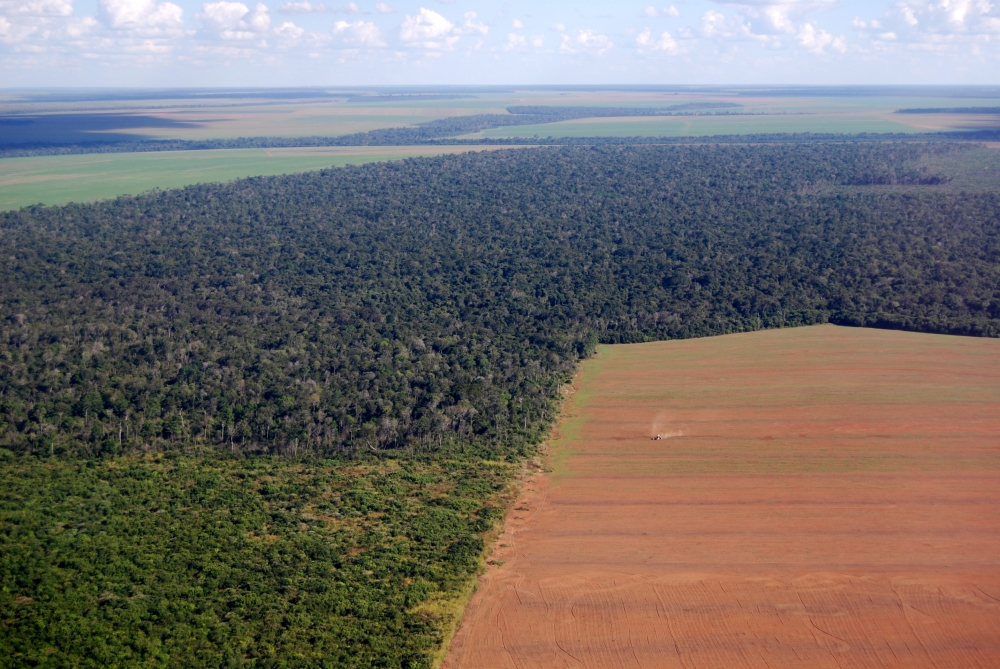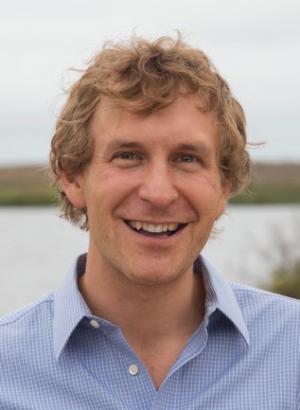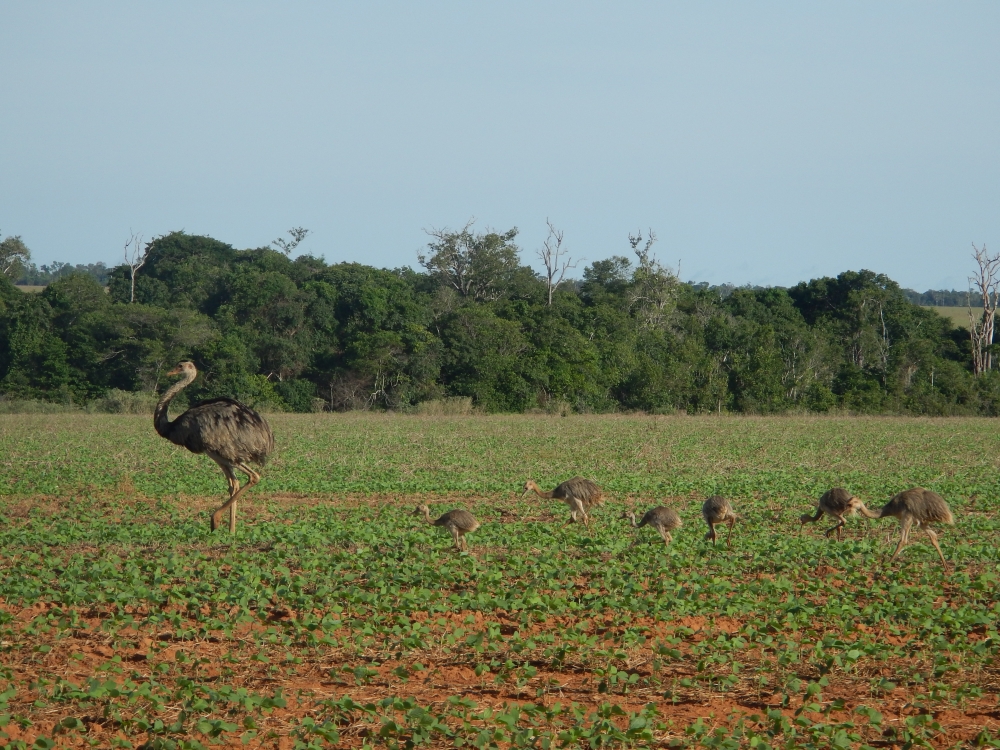
Success in the Amazon

In 2006, Greenpeace launched a campaign exposing deforestation caused by soy production in the Brazilian Amazon. In the previous year, soy farming expanded into more than 1,600 square kilometers of recently cleared forests. The destruction, they said, had to stop.
In response, major soy companies in the region reached a landmark agreement as signatories to the Amazon Soy Moratorium (ASM), pledging not to purchase crops grown on recently cleared land. Deforestation fell in the following years, but no one had measured the moratorium’s aggregate impact.
Now, assistant professor Robert Heilmayr and his colleagues at the University of Wisconsin Madison have quantified the ASM’s effects and documented how it achieved its success. The researchers found that the agreement prevented thousands of square kilometers of deforestation over its first decade. What’s more, the policy did not appear to hamper agricultural growth or push deforestation to other sectors or regions. The study, funded by the Gordon and Betty Moore Foundation and the Norwegian International Climate and Forest Initiative, appears in Nature Food.
“Over one decade the ASM saved 18,000 square kilometers of forest,” said Heilmayr, an environmental economist in the Environmental Studies Program and at the Bren School of Environmental Science & Management. “This is an area bigger than the state of Connecticut.”
Around the same time the Amazon Soy Moratorium was adopted, the Brazilian government was expanding its regulations against deforestation. The policies covered the legal Amazon, a larger administrative area that includes the Amazon biome and parts of the Cerrado biome – a vast region of tropical forest and savannah southwest of the rainforest.
A family of rhea pick at the soy fields, a strip of woodland visible in the background.
Photo Credit: LISA RAUSCH
Fortunately, the moratorium had three key features the team could use to distinguish its effects from these government actions: It went into effect in May 2006; it was restricted to the Amazon biome; and it applied specifically to land cleared for soy production. Heilmayr broke down how these factors directed the team’s analysis. “We compared deforestation across ecological biomes after the adoption of the ASM, and across locations with different suitability for soy production, to isolate the impact of the ASM,” he explained.
The authors found a reduction in deforestation above and beyond what they could attribute to government policies alone. They estimate that between 2006 and 2016, deforestation in soy-suitable portions of the Amazon was 35% lower than what would have occurred without the ASM.
“Our study is important because, for the first time, we were able to control for other policies and factors outside the ASM to quantify its unique contribution to forest conservation,” explained coauthor Holly Gibbs, associate professor at UW Madison.
Scientists and conservationists were concerned the ASM might prompt soy farmers to begin planting in pastures, thereby pushing ranchers to clear more forest, essentially passing the buck to a different sector. However, the study suggests this did not happen. Gibbs explained it’s likely due, at least in part, to similar campaigns aiming to stem deforestation in the cattle sector. These efforts began in 2008 and resulted in similar zero-deforestation agreements in the cattle industry. The team also saw little evidence that the ASM was pushing deforestation into the nearby Cerrado biome, though this risk continues to be a concern.
Although some Brazilian policymakers worry that strict environmental commitments may weaken economic growth, soy production in the Amazon has continued to expand since adoption of the ASM. It increased from 4.9 million tonnes of production in 2006 to 17.2 million tonnes in 2019. Ultimately, the moratorium has demonstrated that soy expansion is possible without deforestation, Gibbs explained.
To better understand how this type of conservation policy could be applied elsewhere, the team sought to pinpoint exactly what contributed to the moratorium’s effectiveness. “One of the strengths of the Amazon Soy Moratorium is that it was a nearly unanimous decision among all the soy buyers in that sector,” said Heilmayr. The signatories account for about 90% of all soy purchases in the region, and this high market share ensured that the agreement would transform agricultural practice. If farmers wanted to sell their soy, they’d have to abide by the policies it set out.
Another factor that contributed to the ASM’s success was the cooperation of private companies, non-profit NGOs and government agencies. Corporate participation adds a direct market penalty that discourages deforestation, Heilmayr explained. Meanwhile, the involvement of environmental organizations like Greenpeace, The Nature Conservancy and World Wildlife Fund boosts confidence that the agreement isn’t merely a form of greenwashing. Finally, public investments in satellite monitoring systems and local property registries provide the backbone for monitoring and enforcing the moratorium. Heilmayr believes the interplay between businesses, NGOs and government actors has lent greater credibility to the initiative in the eyes of the global community.
In 2016, the parties involved chose to renew the ASM indefinitely. While this represents a major victory for sustainable agriculture, the agreement’s continuing success still faces obstacles. Some farmer representatives have raised objections to the ASM, saying that requirements that go beyond the country’s forest laws amount to a violation of Brazil’s sovereignty. However, the researchers note that the ASM also ensures that the Amazon soy sector maintains access to valuable international markets, according to industry trade groups, and at low cost to Amazon soy farmers.

“Very few Amazon soy farmers have land suitable for soy that they could clear in compliance with Brazil’s Forest Code,” said coauthor Lisa Rausch, a researcher at UW Madison. “The ASM really serves to reduce the incentives to clear land on non-soy farms and in unregistered areas for future soy production.”
The current political, economic and environmental zeitgeist highlights the benefits of the ASM’s unique mix of public and private policymaking. Deforestation rates are now double what they were at their low point in 2012, though they’re still dramatically lower than what they were back in 2003 and 2004. This uptick may reflect efforts by the Bolsonaro government to weaken the country’s environmental protections.
Heilmayr hopes “the interplay between private and public policymaking can make environmental gains more resilient – consistent global demand for zero-deforestation soy will continue to discourage new deforestation despite the weakening of public policies.”
As a growing number of major companies pledge to reduce their environmental impacts around the world, the question arises of how to translate these lofty goals into concrete actions. “The ASM is a nice example of what is possible when companies take aggressive, transparent steps towards supply chain sustainability,” Heilmayr said. “It provides hope that private actors can trigger meaningful improvements in the way society interacts with our environment.”




